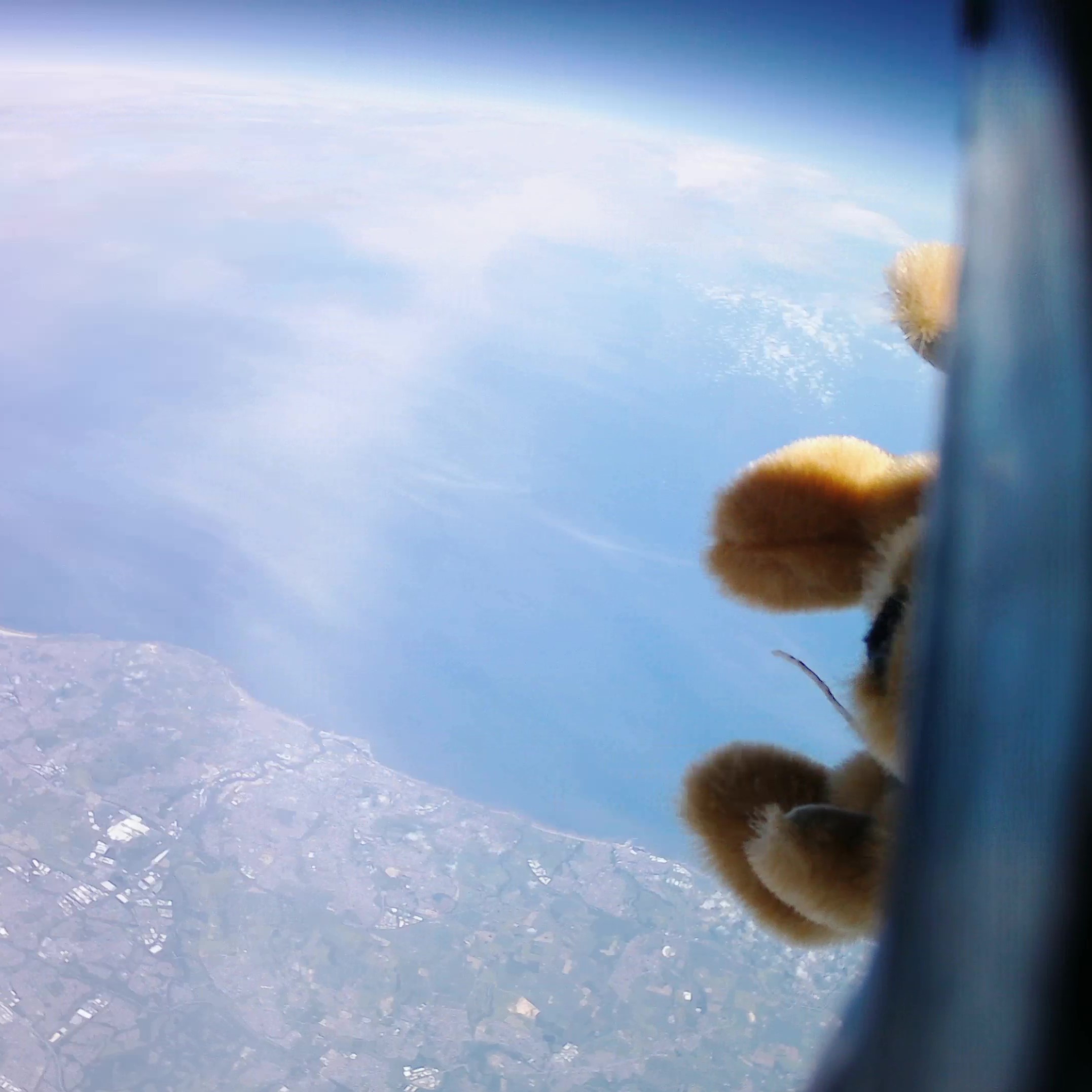In June 2020, DUSF successfully launched a high-altitude balloon to the edge of space. The balloon
was equipped with a teddy bear pilot, two cameras and solar tracker. It steadily rose to an
estimated altitude of 19km
capturing some incredible images of the Northwest of England and beautiful shots of the horizon with
the familiar blue haze that dissipates to the darkness of space. Our team worked remotely over the course of the year to research, design and build the balloon
payload. Once it became possible to meet in-person, the modular components were assembled to
complete the payload. The balloon was inflated with helium at the Physics Department and
then launched from Mountjoy Hill on the Science Site. After a flight time of 88 minutes, the payload
landed south of Consett, a town just outside of the North Pennines around 19 miles from Durham. All
equipment used was then
successfully recovered by the team.
This flight was tracked using a solar Iridium beacon that relayed GPS data and sensor readings to us
via the Iridium satellite constellation. This allowed us to follow the balloon in real-time and find
it after it had landed.
Due to some anomoly mid-flight, the beacon failed to transmit ~10 sequential messages so the maximum
altitude reached had to be calculated using predictions from the acquired data and compared to the
footage captured.



